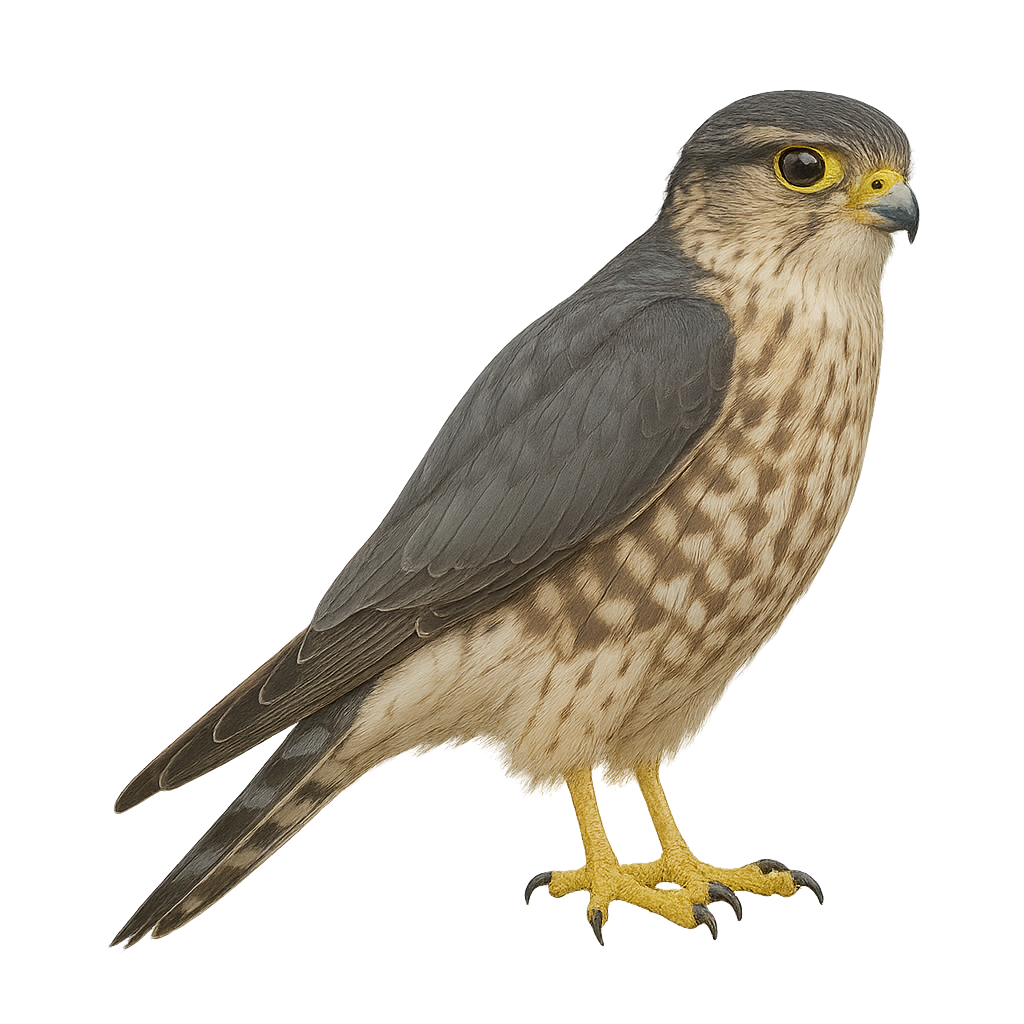Observe and photograph a species in its natural habitat
Learn where and when to observe a species in the wild, how to recognize it in the field, and what habitats it lives in. Get photography tips adapted to its behavior and capture stunning images without disturbing the animal. For full details, open the complete profile in the WildlifePhotographer app.
Merlin
Scientific name: Falco columbarius

IUCN Status: Least Concern
Family: FALCONIDAE
Group: Birds
Shyness: Shy
Safe distance: 30 m
Breeding season / Courtship: 01.04-30.04
Gestation: 28 à 32 jours
Births: 29.05-02.06
Habitat:
Open forests and mountains
Description:
The Merlin is a small raptor, one of the fastest birds, easily recognizable by its compact plumage and vibrant colors. It measures between 28 and 34 cm in length, with a wingspan of 60 to 80 cm, and weighs between 150 and 250 g. The male has a blue-gray plumage on its back, with black wings and a head marked with black bands, while the female is generally larger and duller, with brownish hues. The Merlin is found primarily in Europe, Asia, and North America, where it inhabits a variety of habitats, from open areas such as meadows and agricultural zones to forests. This bird primarily feeds on smaller birds, small mammals, and insects. It hunts in flight, using its impressive speed to capture its prey. It is particularly known for its fast and agile aerial maneuvers. While the species is not endangered, it faces threats such as habitat loss, human disturbance, and the reduction of prey populations.
Recommended lens:
>=300 mm
Photography tips:
Use a telephoto lens to photograph from a distance, respecting the discreet and fast-flying nature of the species.
Photograph early in the morning or late in the afternoon, when soft light highlights the merlin’s contrasting plumage, especially when perched or flying low.
Look for it in various open habitats such as meadows, moorlands, coastal zones rich in shorebirds, marshes, and sparse woodlands. The merlin often hunts in rapid flight, skimming close to the ground in pursuit of small birds or prey.
Be patient and discreet. Merlins are alert and sensitive to human disturbance. Avoid disrupting their behavior, particularly near nesting sites.
The Merlin is classified as Least Concern by the IUCN. Although relatively common and adaptable, protecting its foraging and breeding habitats is essential to support healthy populations.
Ready to take action?
Choose your platform and start your free trial today



